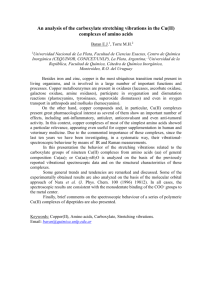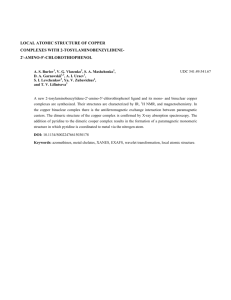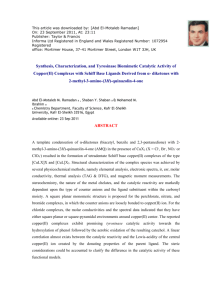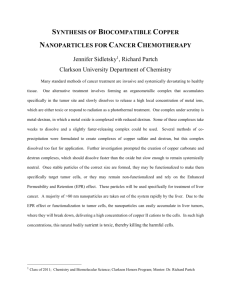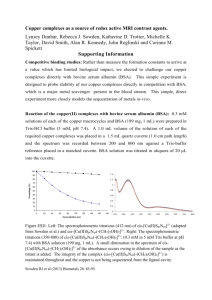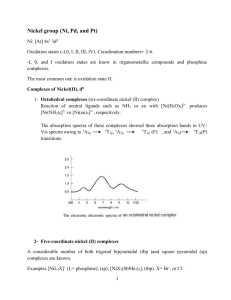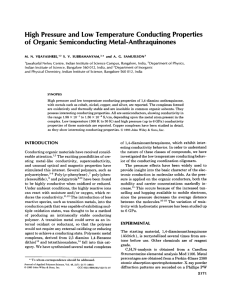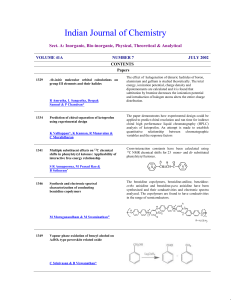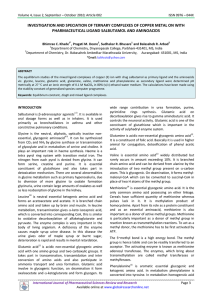Molecular Modelling of Copper(II) Complexes with Histidine
advertisement
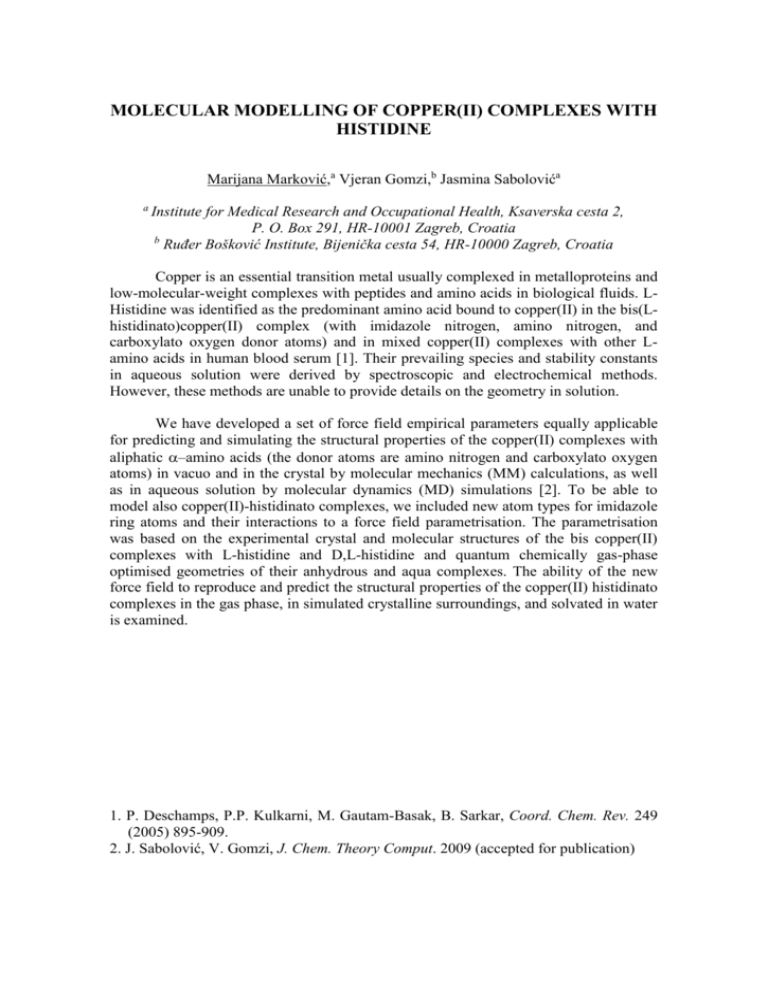
MOLECULAR MODELLING OF COPPER(II) COMPLEXES WITH HISTIDINE Marijana Marković,a Vjeran Gomzi,b Jasmina Sabolovića a Institute for Medical Research and Occupational Health, Ksaverska cesta 2, P. O. Box 291, HR-10001 Zagreb, Croatia b Ruđer Bošković Institute, Bijenička cesta 54, HR-10000 Zagreb, Croatia Copper is an essential transition metal usually complexed in metalloproteins and low-molecular-weight complexes with peptides and amino acids in biological fluids. LHistidine was identified as the predominant amino acid bound to copper(II) in the bis(Lhistidinato)copper(II) complex (with imidazole nitrogen, amino nitrogen, and carboxylato oxygen donor atoms) and in mixed copper(II) complexes with other Lamino acids in human blood serum [1]. Their prevailing species and stability constants in aqueous solution were derived by spectroscopic and electrochemical methods. However, these methods are unable to provide details on the geometry in solution. We have developed a set of force field empirical parameters equally applicable for predicting and simulating the structural properties of the copper(II) complexes with aliphatic –amino acids (the donor atoms are amino nitrogen and carboxylato oxygen atoms) in vacuo and in the crystal by molecular mechanics (MM) calculations, as well as in aqueous solution by molecular dynamics (MD) simulations [2]. To be able to model also copper(II)-histidinato complexes, we included new atom types for imidazole ring atoms and their interactions to a force field parametrisation. The parametrisation was based on the experimental crystal and molecular structures of the bis copper(II) complexes with L-histidine and D,L-histidine and quantum chemically gas-phase optimised geometries of their anhydrous and aqua complexes. The ability of the new force field to reproduce and predict the structural properties of the copper(II) histidinato complexes in the gas phase, in simulated crystalline surroundings, and solvated in water is examined. 1. P. Deschamps, P.P. Kulkarni, M. Gautam-Basak, B. Sarkar, Coord. Chem. Rev. 249 (2005) 895-909. 2. J. Sabolović, V. Gomzi, J. Chem. Theory Comput. 2009 (accepted for publication)
